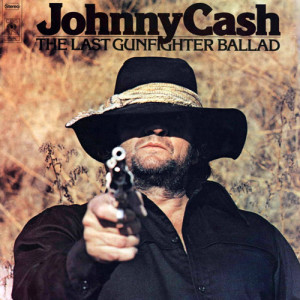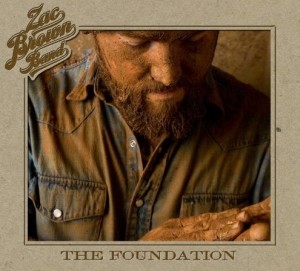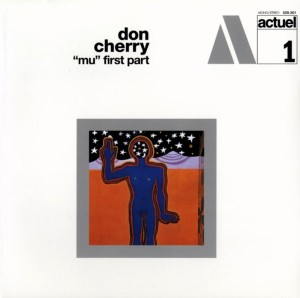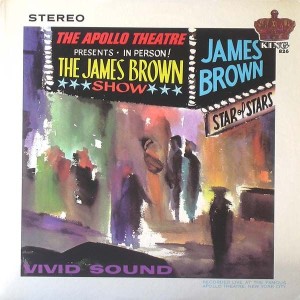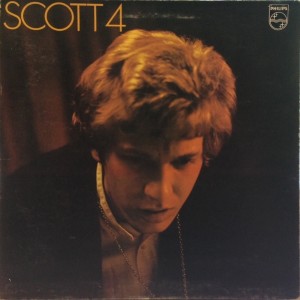Link to an article by David Alexandre:
Author: Syd Fablo
Sean Monahan – Reading Paine From the Left
Link to an article by Sean Monahan:
Johnny Cash – The Last Gunfighter Ballad
Johnny Cash – The Last Gunfighter Ballad Columbia KC 34314 (1976)
As the 1970s wore on, Johnny Cash had more and more difficulty finding enough suitable songs to fill an album. The song selection on The Last Gunfighter Ballad ranges from the decent (Guy Clark‘s “The Last Gunfighter Ballad”) to the tedious (Terry Smith’s “Far Side Banks of Jordan”). Three songs he had previously recorded. He also was more and more likely to give a half-hearted effort singing. But unlike most of the lesser stuff of Cash’s lean forgotten years, the bad stuff is not just boring but truly awful. The opener “I Will Dance With You” is perhaps the very worst Cash performance on record…and some moron decided to put it first on the album! Same goes for “You’re So Close to Me,” which opens side two. Lots of other stuff actually feels almost like leftovers from the One Piece at a Time sessions, or at least attempts to do more of the same (“City Jail”). Yet, it’s a shame and a waste that “Give It Away,” with a nice gospel-style vocal chorus, is a fine performance of a corny song. And “Cindy, I Love You” has a guitar part derivative of “You’ve Got a New Light Shining In Your Eyes” but still ends up being a terrific song. There definitely are some gems here. This is probably the most uneven album Cash made in the 1970s. He makes it hard to love or hate this in its entirety, and it will take a died-in-the-wool Cash fan to appreciate this motley beast as a whole. But, yes, it still boasts one hell of an album cover photo.
Jörg Wiegratz – Bankers Have a Moral Compass, It Just May Not Look Like Yours
Link to an article by Jörg Wiegratz:
“Bankers Have a Moral Compass, It Just May Not Look Like Yours”
Zac Brown Band – The Foundation
Zac Brown Band – The Foundation Atlantic 516931-2 (2008)
The Foundation draws heavily on easygoing beachside pop-rock by Jimmy Buffett and latter-day followers like Jack Johnson, and even Dave Matthews Band-like easygoing folk jams, but combined with typical mainstream country twang. Parts of the album have some decent fiddle playing that leans more toward traditional country (the best thing the album has going for it), plus songs like “It’s Not OK” and “Sic ’em on a Chicken” that are more in the outlaw country-rock or Charlie Daniels Band mode. Zac Brown, who has a rather nice natural voice, sings with contemporary country music’s usual heavily affected half-yodel with overdubbed harmony. There are some good performances, as on the hit song “Chicken Fried.” However, music like this should not be trusted. It is divisive, and that is its purpose. The opener “Toes” has the lyrics “I got my toes in the water, ass in the sand / Not a worry in the world, a cold beer in my hand / Life is good today, life is good today.” This song sets the tone for the entire album. Basically, this is militant ruralism, if it can be called that. The opening lines signal that this is music that will be considered “crude” by wealthy urban elites. This is music meant to distinguish its audience from those groups. In a way it is meant to smugly belittle those other groups, as if they don’t “get” the characteristics of its more rural, working class intended audience (and maybe they don’t). Elsewhere the album expresses a degree of frustration, not angrily or in an exasperated way, but to adopt implicit bewilderment by the world and a desire to just detach from it and just go off and have some fun. It is kind of a lazy, cowardly — if not overtly mean-spirited — response to a recognition that the world is a messed up place (“It’s Not OK”), but the songs simply express a desire to get away from that, do nothing about it, and take whatever pleasures are available on hand. The sentiments driving this album are offensively egotistical in many ways. Some listeners rejoice that Zac Brown mentions reggae music and looks to other genres outside country, but it is worth taking a closer look to see why and how he does those things, which most often is to bolster a brand of reactionary populism that is dangerously apathetic to external corruption and reliant on discriminatory demagoguery.
Don Cherry – “mu” First Part
Don Cherry – “mu” First Part BYG 529.301 (1969)
For me, this is Cherry’s single best album. It finds him and Ed Blackwell doing something with cultural musics from around the globe that no one else had ever really attempted before, and the results are astonishing. If it had to describe it, I would say it’s about stitching together common threads in seemingly diverse musical traditions from around the world in an earnest attempt to express something through Cherry and Blackwell’s personal connections to those musics. And what separates this from lesser visions that might fall under the category of cultural piracy is that this album reflects a legitimately deep understanding of and appreciation for the different musical traditions brought together, and a genuine sense of connection to what those traditions express. Importantly, these guys are NOT appropriating “world” music just to sound “exotic”. For those unfamiliar with Cherry’s late 1960s/early 1970s work in that vein, you might try Eternal Rhythm first, which is slightly more conventional and easier to absorb.
Miles Brown – Wisconsin: The Worst State for African Americans
Link to an article by Miles Brown:
“Wisconsin: The Worst State for African Americans”
Bonus links: “The 1 Percent’s White Privilege Con: Elites Hold ‘Conversations’ About Race, While Resegregating Our Schools,” “Separate and Unequal”
James Brown – The Apollo Theatre Presents – In Person! The James Brown Show
James Brown – The Apollo Theatre Presents – In Person! The James Brown Show King 826 (1963)
It is reasonable to say this is James Brown’s best album. His studio stuff, like Hell for example, is great but it’s only great music. With The Apollo Theatre Presents – In Person! The James Brown Show [a/k/a Live at the Apollo, 1962], James Brown materializes in front of your stereo. This is the James Brown experience, preserved in VIVID SOUND as the album jacket barks.
The announcer opens the show and the band plays James to the stage. The band holds back a moment as James shouts a cappella how right he feels. He launches into a powerful rendition of “I’ll Go Crazy.” His performance leaves no doubt: if she leaves him, he will go crazy. James immediately cuts to the pleadings of “Try Me.” He doesn’t work up to big numbers but jumps in head-first.
A live performance like this becomes a part of you. Screams from the crowd as “I Don’t Mind” starts are like a bus ticket home. The crux of the album is the ten-minute version of “Lost Someone.” He draws you into his personal audience (and charms the pants off any ladies present).
The show plays out before you. He collapses to his knees. Disciples rush to him with his signature king’s robe. As they lift him to his feet, he pulls away and rushes back to the mic. No one will stop James Brown from singing for you. He collapses again, only to rush back to cry out a few more lines. This album recreates that unique drama on every listen.
This is James Brown and the Famous Flames — the band that established James Brown as James Brown, the Hardest-Working Man in Show Business, Mr. Please Please Please himself, Soul Brother #1. James Brown wasn’t the greatest soul singer ever. He was simply the one and only Mr. Dynamite. Nothing captures or describes the man completely, but damn, this little album comes close.
Recorded on October 24, 1962, this was the heyday of soul revue shows. Soul artists had to work the circuit and a show at the Apollo Theater was where things mattered. It’s a short record. The sets had to be short and polished to fit in all the acts. Also on the bill that night in ’62 were The Valentinos (Bobby Womack & family), Solomon Burke, Freddie King, and more. Something special happened when James Brown took the stage. Even following some great acts, the Famous Flames rise to the occasion. This set was tight. Maybe it was destiny.
James had a few hit singles, but this was his first hit album. Many of his albums are excellent of course, but this is a special one among them. The Apollo Theatre Presents – In Person! The James Brown Show is one that helped define what live albums are about. This is star time.
This performance runs straight to the heart of American music. All pop music must be compared to James Brown. Not that everything has to sound like him, but you at least have to try to be this good, this pure, this captivating
Scott Engel – Scott 4
Scott Engel – Scott 4 Philips SBL 7913 (1969)
Scott 4 is easily one of my favorite albums. I do recognize that some people won’t be able to relate to this music and therefore probably won’t bother to understand it. But I think that for what it is, Scott 4 is perfect. Its compassion, realism and sincerity have always impressed me.
Over the course of thirty years Noel Scott Engel (under the stage name Scott Walker) went from pop heartthrob adored by swarms of teenage girls to cult icon to reclusive mystery man and dark experimental maverick. Scott Walker was born in America, but his fame in the 1960s and 70s came in England.
Most amazing is that this music exists at all. All attempts to categorize it fail. Is it part of the counterculture, or part of the establishment? Or both? Perhaps it’s the directness. Scott Walker takes his music directly into a soft vortex of emotion and intellect.
Scott Walker’s craft seems like bad idea on paper. Scott 4 isn’t an album you can convince people to like. Most of its supporters are the types that have heard everything under the sun and have come back to what less discerning ears would lump with much more forgettable music. Scott Walker’s voice may sound flip, but he made some of the most heartfelt music you may ever hear. Scott 4 is personal. It takes a certain something to appreciate the album’s depth, but that doesn’t lessen its achievement.
If I were to sum up Scott Walker’s career in the 1960s, I would say that his greatest accomplishment was taking the music of extroverts and turning it into music for introverts. He took the kind of orchestral pop that has a lot of immediate and superficial appeal, and was the epicenter of the “old guard” of the institutions of the music industry, and turned it into music that is edgy and subtly a countervailing force against the establishment. He obliterated the notion that orchestrated pop had any sort of deterministic, essentialist qualities. It was a form that could serve any ends. You won’t understand Scott Walker by listening to this album just once. The craftsmanship and brilliant songwriting are surprisingly elusive. It is like he could hide things in plain view. And it is as if he founds the seeds of something that included the old and the new, together, moving forward in a world where the all sorts of perspectives and musics have a chance to exist simultaneously and harmoniously with all their differences still intact. Brilliant.
Slavoj Žižek – Wither Zionism?
Link to an article by Slavoj Žižek:

